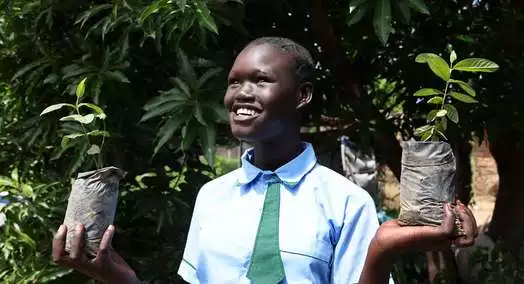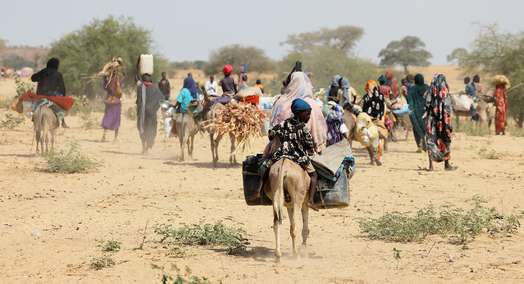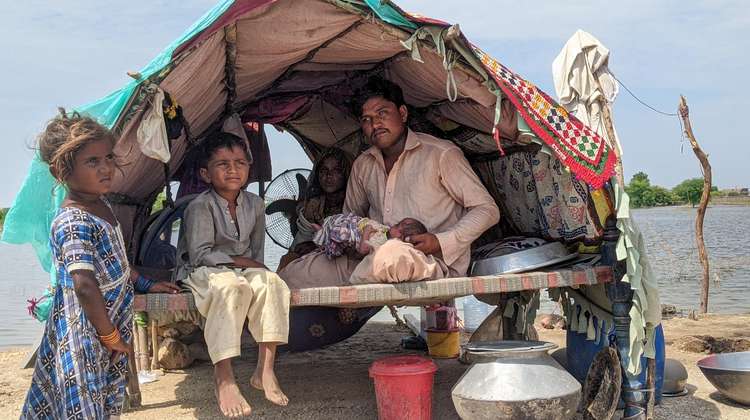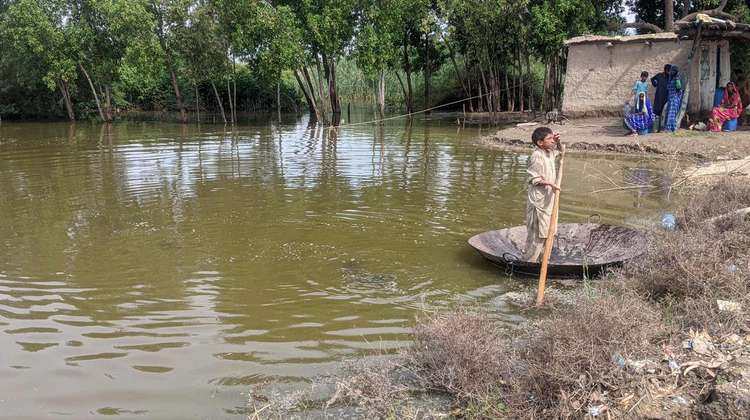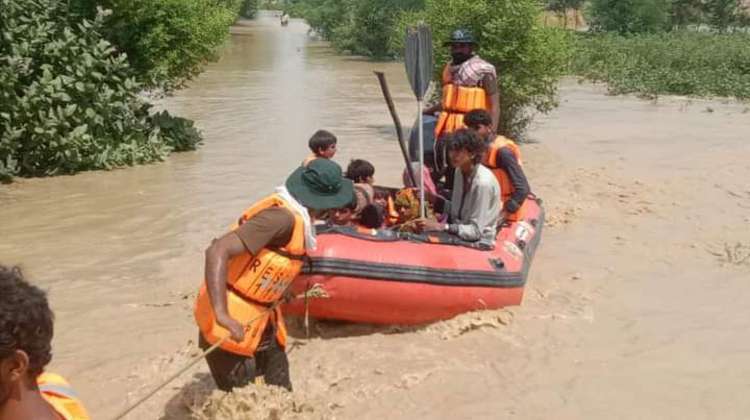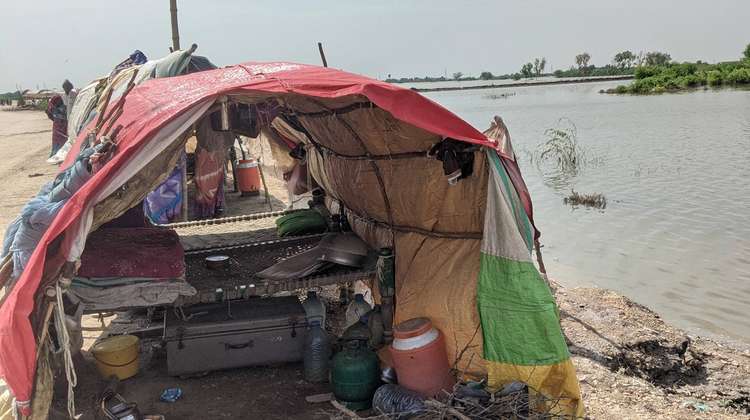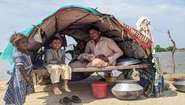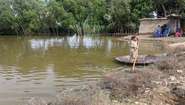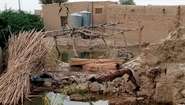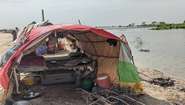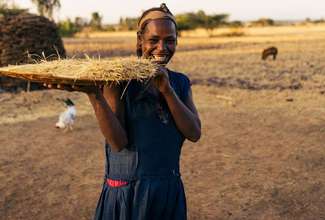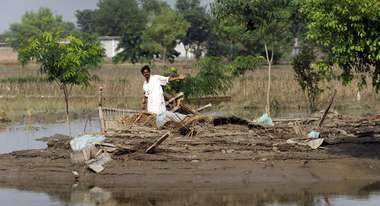The effects of climate change are a central cause of hunger and poverty.
People Lose Their Livelihoods To Floods Yet Again
More than 1,700 people have died in Pakistan following torrential rain between June and October of 2022. Many schools, homes, farms and roads have simply been swept away by the masses of water since the beginning of the floods in July 2022. Several million people have been displaced and lost their livelihoods. The water started to recede slowly at the end of September 2022. But it has destroyed not only infrastructure, but crops as well. A large number of livestock have been killed and farmland has been severely damaged. Due to stagnant water and the destruction of sanitary installations, infectious diseases like cholera and malaria are rampant. Even one year after the beginning of the disaster, many people are still dependent on humanitarian aid.
Around 33 million people have been affected by the heavy rainfall and its impacts. The flooding, flash floods and landslides were caused by above-average monsoon rainfall in Pakistan within a very short period of time. Pakistan is one of the ten countries in the world most affected by climate change. Extreme weather events occur time and again.
Welthungerhilfe together with its local partner organizations is carrying out emergency relief measures in the provinces of Sindh, Balochistan, Khyber Pakhtunkhwa and Punjab. For example, affected people receive essential items such as mosquito nets, buckets with drinking water filters, kitchen utensils, jerry cans, solar lamps and hygiene items. We are also providing food kits and food vouchers. People who currently have to live on the streets receive plastic mats, tarpaulins and bamboo canes which they can use to build emergency shelters. Welthungerhilfe and its partners are also helping with the dewatering of cities and by supporting agriculture with seeds and tools.
How Welthungerhilfe And Its Partners Help After The Floods
- In the Rajanpur district, Welthungerhilfe has supported the development of community-level disaster preparedness in recent years. The Union Council Disaster Management Committees (UCDMC) are now helping with the flood relief.
- Welthungerhilfe is supporting the UCDMCs through its partner Doaba, for example for the purchase of fuel for motorcycles, protective equipment and emergency kits.
- We are distributing food or food vouchers in the worst affected regions.
- Mosquito nets will help prevent the spread of diseases.
- We are distributing seeds and tools to support small-scale agriculture and consequently the supply of food.
- We are providing building materials for the repair of damaged houses.
- People are receiving urgently needed items such as drinking water filters, cooking utensils, jerry cans, solar lamps, blankets and hygiene items.
- In the urban and semi-urban areas of Hyderabad and the districts of Badin and Mirpurkhas, we are helping with dewatering, with the aim to prevent the spread of waterborne diseases.

